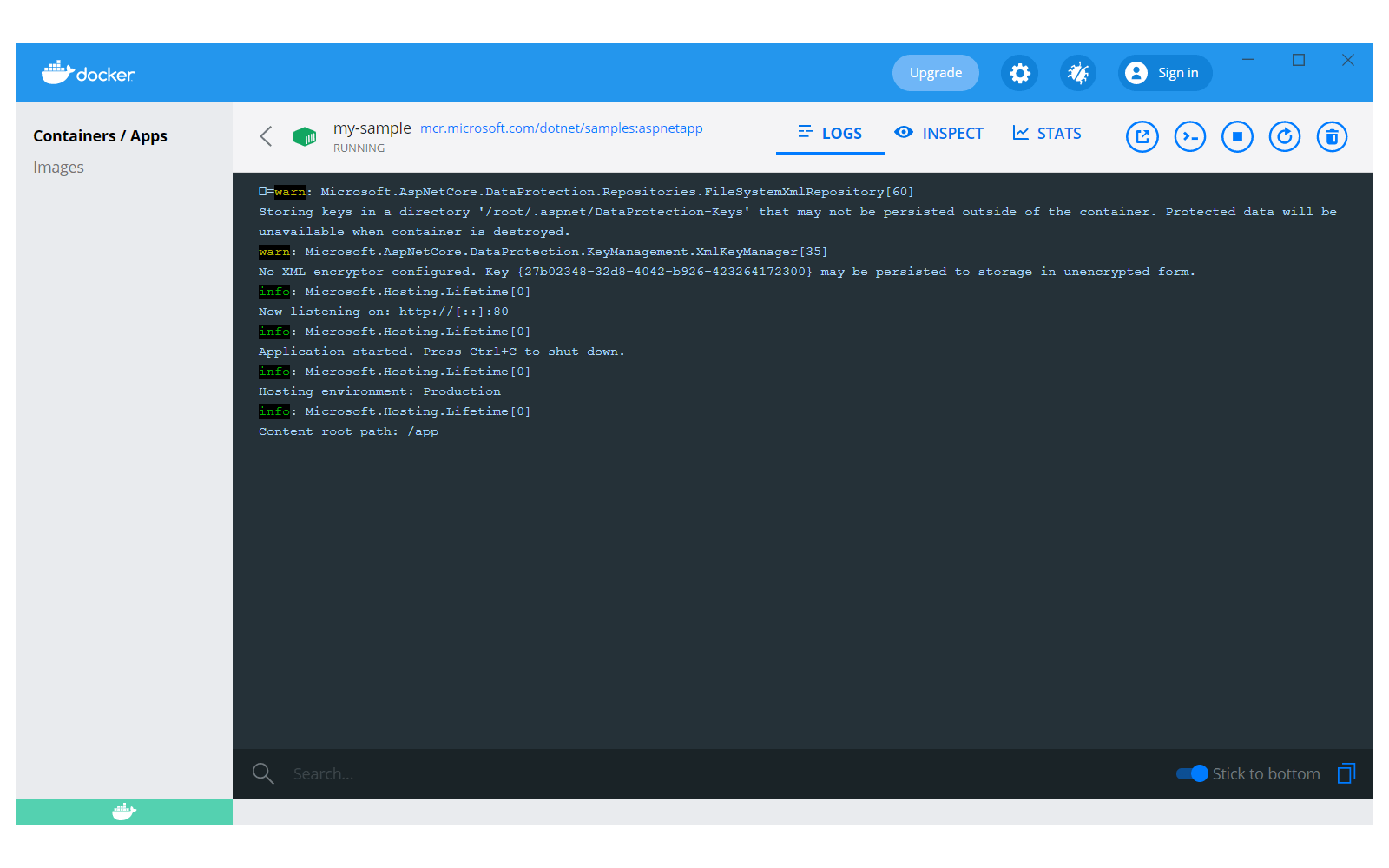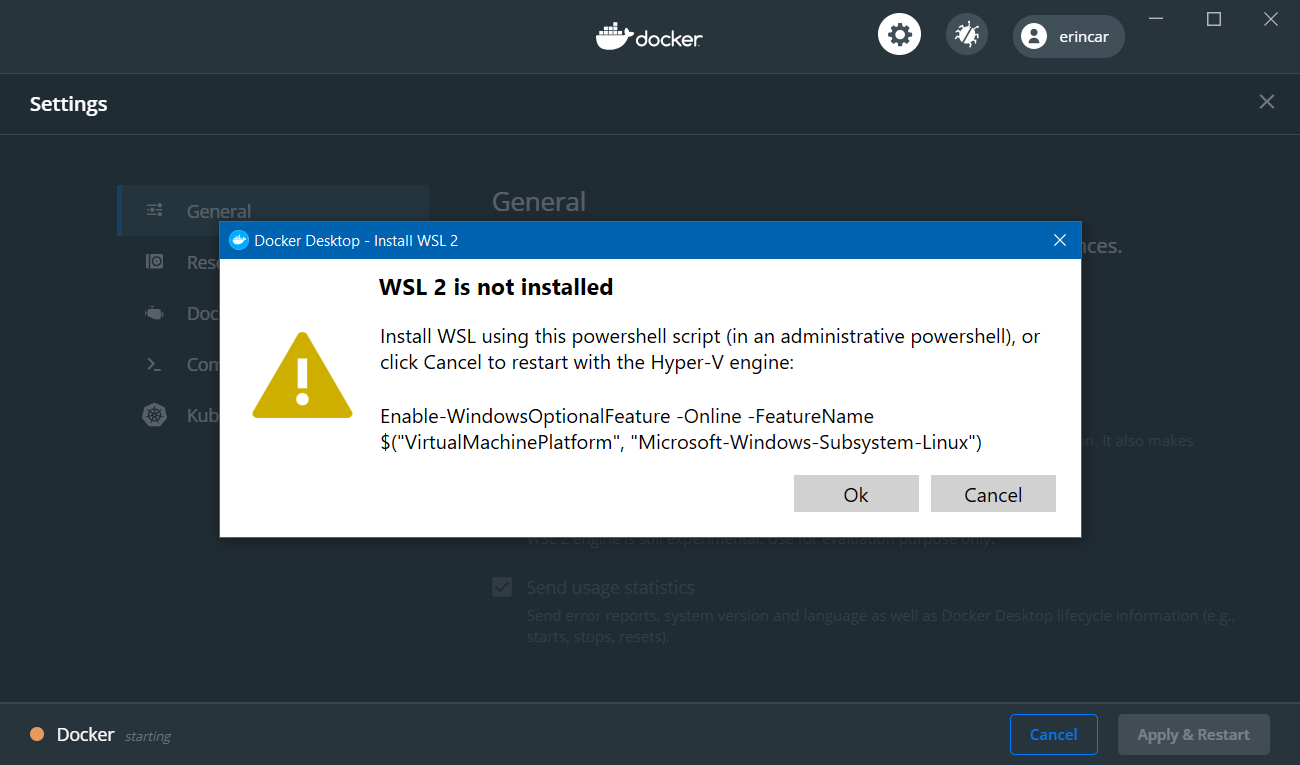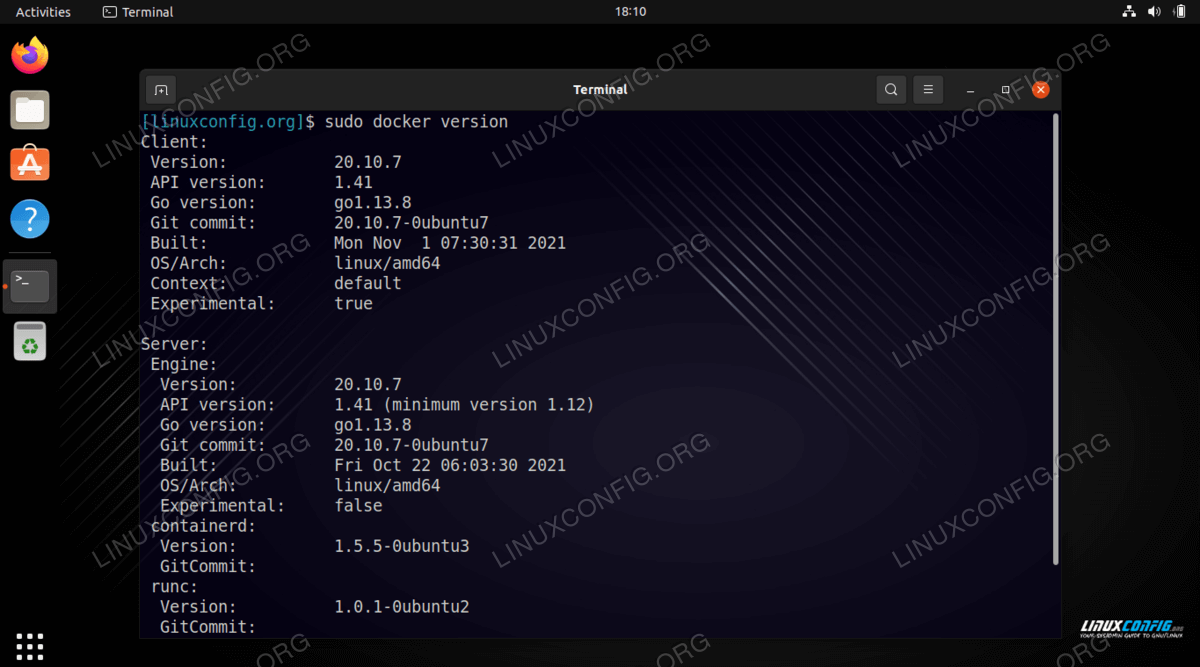
- Ubuntu install docker desktop how to#
- Ubuntu install docker desktop install#
- Ubuntu install docker desktop full#
- Ubuntu install docker desktop software#
- Ubuntu install docker desktop code#
To run Docker commands as a non-root user (without sudo), create and add yourself to a docker group: sudo groupadd docker
Ubuntu install docker desktop install#
Sudo apt-get install docker-ce docker-ce-cli containerd.ioĬonvenience scripts are also available to run these commands for you, but the Docker documentation warns they are a security risk and should not be used in production environments: curl -fsSL -o get-docker.sh Sudo add-apt-repository "deb $(lsb_release -cs ) stable" Sudo apt-get install apt-transport-https ca-certificates curl gnupg-agent software-properties-common


For example, Docker for Ubuntu is installed with the following commands: sudo apt-get remove docker docker-engine docker.io containerd runc “install Docker on a Raspberry Pi”.įollow the Docker documentation for your distro. Static binaries are available for other distros, although Googling “install Docker on ” may provide easier instructions, e.g. The latest edition is supported on recent 64-bit editions of popular Linux distros: Requirements and installation instructions can be found on the Docker Docs help pages.ĭocker is often available in official Linux repositories, although these usually offer older editions.
Ubuntu install docker desktop full#
The full course can be purchased from .ĭocker can be installed on Linux, mac OS, or Windows 10.
Ubuntu install docker desktop how to#
It explains how to install Docker on all popular operating systems. This is the third chapter of the “Docker for Web Developers” book. To test that everything is working, try to run the docker command that you aliased in the previous step (docker, mpdocker, or the name you chose).How to install Docker on Windows, mac OS, and Linux Wrap-Upīy now, you should be able to run the docker command from the terminal on your host machine. More info on aliasing commands can be found here. I wanted to use both commands, so I chose the name ‘mpdocker’ for the aliased command to avoid conflicts. Whichever command is listed first in the PATH will be used. If, like me, you already have the docker cli on your machine, this aliased command may supersede your existing ‘docker’ command. The output of the alias command gives the necessary steps, which should look like the following: $ENV:PATH="$ENV:PATH C:/Users/natha/AppData/local/multipass/bin" We can take things one step further, however, by adding Multipass to the PATH variable, which will eliminate the need for the multipass prefix. Now, we can run docker commands in the VM by first referencing multipass, e.g. For host-machine access, we will alias the docker command to the host as follows: multipass alias docker-vm:docker Our VM is now ready, but we currently can only access the docker instance from within the VM. Once the VM has finished its installation process, it will automatically download and install docker on that VM.
Ubuntu install docker desktop code#
In Terminal, run the following cloud-init code to create a new VM called docker-vm with docker engine installed: multipass launch -cloud-init -disk 40G -mem 4G -cpus 4 -name docker-vm <
Ubuntu install docker desktop software#
That Docker instance can be controlled either directly from the VM, or remotely from the host machine with no additional software required. Multipass can host a docker engine inside an Ubuntu VM in a manner similar to Docker Desktop. If you’re looking for an alternative to Docker Desktop or to integrate Docker into your Multipass workflow, this how-to is for you.


 0 kommentar(er)
0 kommentar(er)
